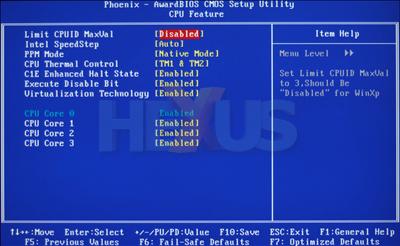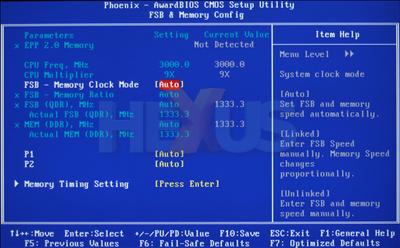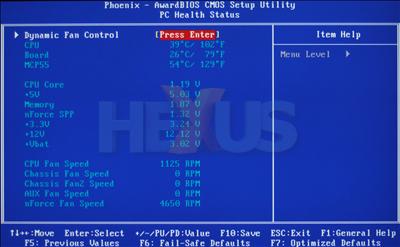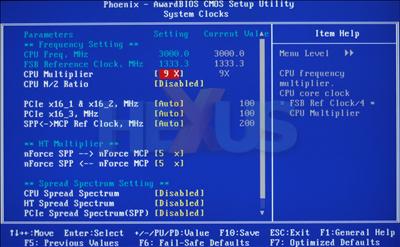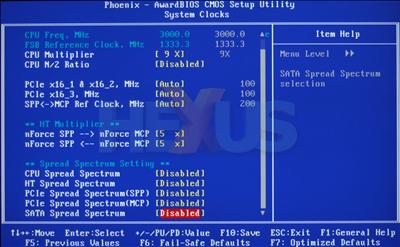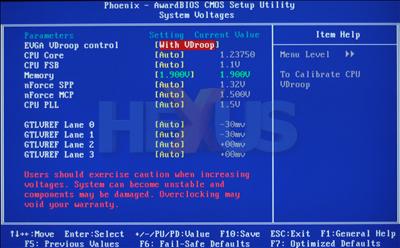BIOS
EVGA's nForce 790i SLI FTW uses a Phoenix AwardBIOS. In addition to the usual array of BIOS options is the page that'll matter most to the enthusiast; Frequency/Voltage Control. Before we get to that, though, we'll need to get a few quirks off our chest.
As was the case in EVGA's nForce 790i Ultra SLI, there's still no support for full BIOS profiles. The saved BIOS profiles only cover the performance settings under "advanced chipset features", therefore if you need to clear the CMOS, you have to manually reset all the other settings to your preferred values.
We also found that in auto mode, CPU and chassis fans were set to only spin at full speed when temperatures reach 70 and 60 degrees Celsius, respectively. Far too high for our liking, and stability issues could arise before the fans take action.
Last but not least, Enhanced Intel SpeedStep technology (EIST) is disabled by default. Minor quirks, we feel, but on a high-end board that asks for over £200 of your hard-earned, the less quirks the better.
In terms of tweaking, the board has just about everything covered. For the newcomers, there's a "Dummy O.C." option that allows automatic overclocking in 5 per cent increments up to a maximum of 25 per cent.
For the enthusiast, practically every imaginable option can be tweaked. To give just an indication of the options available, CPU and FSB voltage can be raised to 2.0 volts and 1.65 volts, respectively. SPP and MCP rise to 1.57 volts and 1.75 volts, and memory can be pumped up to 3.075 volts.
Memory timings can be specifically adjusted for performance, as can the PCIe, SPP and MCP bus speeds. CPU FSB can be ramped up to 700MHz and memory FSB up to 1,400MHz.
The FSB & Memory Config page allows for the system clock mode to be set to Auto, Linked and Unlinked. Auto sets FSB and memory speed automatically, Linked takes your chosen FSB speed and adjusts memory accordingly, and Unlinked allows you to specify each manually.
There's certainly enough to keep a user occupied.






